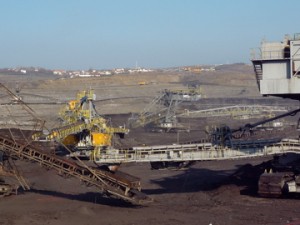Why Coal-Rich Kosovo Can Lead on Clean Energy
 Over the past decade, plans for 160 new coal fired power plants in the United States have been scrapped, largely due to rising costs and an inability to compete in today’s energy markets. That’s because the cost of once-“expensive” clean energy has fallen dramatically, while “cheap” fossil fuels are increasingly expensive in economic, health, and environmental terms. As a result, in many parts of the world, wind is the least-cost source of electricity. In addition, in the sunniest parts of the United States, long-term forecasts are for incredible growth in solar energy and natural gas, but not for coal.
Over the past decade, plans for 160 new coal fired power plants in the United States have been scrapped, largely due to rising costs and an inability to compete in today’s energy markets. That’s because the cost of once-“expensive” clean energy has fallen dramatically, while “cheap” fossil fuels are increasingly expensive in economic, health, and environmental terms. As a result, in many parts of the world, wind is the least-cost source of electricity. In addition, in the sunniest parts of the United States, long-term forecasts are for incredible growth in solar energy and natural gas, but not for coal.The international political discourse needs to catch up to this new energy reality that California and others are leading. That’s why for over a year I was honored to work at the World Bank as its first Chief Technical Specialist for Renewable Energy and Energy Efficiency – its “clean energy czar.” I worked with talented and dedicated individuals across the institution and saw important strides taken to share this knowledge with governments around the world.
Today, less than four months since I left to return to my academic post at the University of California Berkeley, I see a critical decision point where the World Bank, the U.S. government, and other international players can chart a path suitable for the 21st Century, and empower political leaders to lead the charge for a clean energy future for the Kosovar people – or we can collectively fumble a chance to usher in a new secure and sustainable energy economy.
Kosovo is a very poor country that suffers hours of power cuts every day, and yes, it sits on vast reserves of lignite coal. Lignite is often referred to as “brown coal;” it is a soft, brown fuel somewhere between coal and peat in characteristics. It is considered the lowest rank of coal in terms of energy content, so it is burned in high volume, releasing even more carbon dioxide than combustion of higher grades of coal. The full costs of this high-carbon energy option are too high for the people of Kosovo, and the international community has the resources and opportunity to assist in charting a different path. California, as well as Portugal, Denmark, Kenya, and Australia all show the possibility and the power of an integrated plan – across a diverse set of energy resources, systems of government, and starting positions.
Recent analysis by a former chief U.S. Environmental Protection Agency official working with the Sierra Club found that addressing the country’s vast losses alone (up to 40 percent of power generated) eliminates the need to put Kosovo’s environment or the health of their citizens at risk with a new coal plant. They also found that a new coal plant is far more expensive than policymakers had planned, risking dramatic increases in electricity rates and 1 billion euro (about $1.3 billion U.S.) in debt at a time when the financial crisis is raging across Europe.
My own research team at the University of California Berkeley analyzed the alternative energy potential for the country. We found that a far more sustainable option exists. (See “Sustainable Energy Options for Kosovo.”) Investing in energy efficiency and upgrading the transmission and distribution system, exploiting wind and biomass resources, and engaging in regional partnerships with Albania on excellent hydropower resources provide more power than the proposed new lignite coal power plant. These options also produce more jobs and avoid the health and environmental damages of decades more coal-fired energy.
It is clear Kosovo has another path, and I will be bitterly disappointed if the World Bank, the U.S., and EU governments, who all mean well in support of the energy- and economically poor nation of Kosovo, choose to support plans for a business-as-usual lignite-coal-fired power plant. This decision will lock Kosovo into carbon-intensive energy for decades to come when European Union membership – the stated goal of Kosovo – comes with a mandate to cut emissions by 20percent or more over the next decade. It will also force residents in Obilić where the coal-fired power plant would be built, and in Kosovo’s capital Pristina, to breathe polluted air that in the United States kills 30,000 Americans every year. This is a devastating legacy for a young nation that we know can have a different path.
In 2010, my laboratory at UC Berkeley conducted a similar analysis for the Malaysian state of Sabah. The Prime Minister and his team examined our findings, and agreed to adopt a mixture of renewable energy and natural gas to meet the state’s energy needs. (See: “How a Malaysian Village Found a Coal Power Alternative.”) Now the same story of a transition from fossil-fuel based plans to clean energy plans could become Kosovo’s. There are increasingly strident calls from civil society to found the young country’s future on clean alternatives that will provide far more jobs and ensure energy access for all. The world has changed, now Kosovo needs the World Bank to seize the opportunity to champion sustainable development and help them join a new clean energy path.
You can return to the main Market News page, or press the Back button on your browser.

